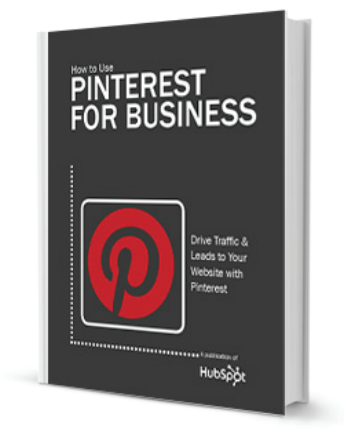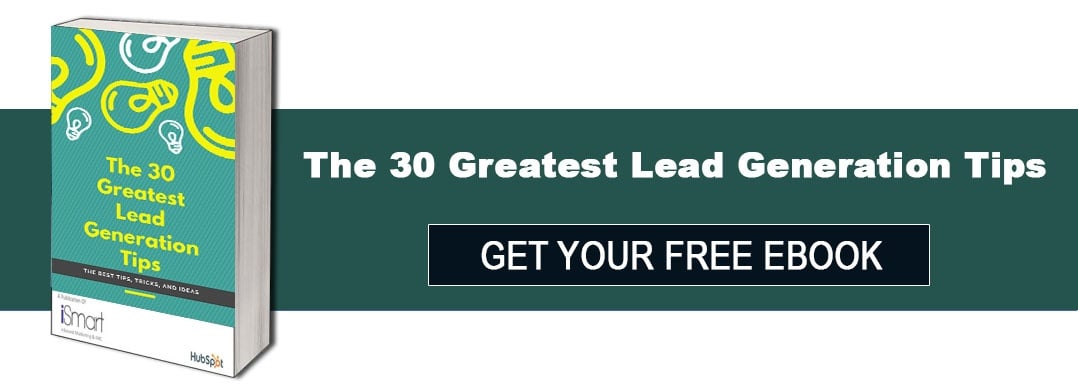
How to Craft Compelling Calls-to-Action That Drive Results
September 25, 2025
Understanding the Impact of Facebook’s Data Policy Update on Marketing
September 25, 2025
This blog post is extracted by Alex Yusof from our new eBook, “30 Greatest Lead Generation Tips”.
Yes. It’s one of the most powerful words in the human language. And if you think about all the things we do as marketers, it’s ultimately to get people to say “yes” to our offers. When an offer is exclusive, scarce, or in high demand, it becomes more desirable. Whether they are white papers, free trials, memberships, sales promotions, or downloads, these irresistible elements can overcome a lead’s typical friction, doubt, or concern. Why do these elements work? Because they trigger a physiological reaction that makes an offer more valuable. People need to perceive the value of your offer to be greater than what you’re asking for in return. The higher the perception of value, the more irresistible the offer. So how do you create irresistible offers? Glad you asked. Read on to find out!
1. Use the Element of Scarcity
If you look at the principle of supply and demand, you’ll notice that when supply is limited, demand goes up. Scarcity has a psychological influence on us, making us want something even more if there isn’t enough to go around. Scarcity is great because it creates a fear of shortage, and thus a sense of urgency.
Limited Time Offers
Limited time offers are among the most popular in the scarcity category. Just think about your average car dealership. Practically every commercial is a limited time deal. “Get 0% financing before it’s gone!”
Limited Quantity Offers
When something is of limited quantity, it suddenly becomes more unique or exclusive. In some studies, limited quantity or supply offers have outperformed limited-time offers. Why? Because it’s hard to tell when an offer of limited quantity will suddenly become unavailable, while a time-based offer has a known end time. Limited quantity offers are great for not only getting people to say “yes” to your offer, but to avoid procrastination completely.
Limited Time and Limited Quantity
Groupon is the perfect example of using both tactics. All Groupon deals end within a certain time frame, and they limit the number of people who can buy a Groupon. That’s a powerful combination. The site also packages these scarcity tactics with discounting, which is another great value-add, especially for ecommerce businesses.
2.The Bandwagon Effect
It’s a natural tendency for humans to copy one another, even without realizing it — we like to be a part of tribes and social communities. So when we notice our social circle is doing one thing, we tend to follow suit. One great way to make an offer more valuable is to show that other people are participating in that offer.
Proof in Numbers
When possible, a great way to indicate how awesome an offer is to mention the number of people who have purchased, downloaded, signed up, or donated.
Some examples include:
• Webinars: On a page promoting our webinar with Facebook, we’ve stated that more than 40,000 have signed up.
• Blog Subscription: Similarly, on a blog under our “subscribe” module, it indicates over 130,000 people have subscribed. This is proof that it’s a highly trustworthy and popular blog people should follow.
• Conferences: Events like SXSW and INBOUND are some of the hottest events because tons of people flock to them every year.
Just make sure your claims are not only true, but believable.
3. Leverage Newsjacking
After Prince William and Kate Middleton got married in April of 2011, no one could stop talking about Kate’s wedding dress. Within hours after the wedding, vendors began making near-identical copies or similar styles of the Stella McCartney-designed dress. Even vendors such as David’s Bridal now have a “Royal” category so you can dress “just like Kate.”
When something is buzzworthy, it creates high demand. In situations like this, you can align offers with “what’s hot.” Companies will often leverage newsjacking for this type of technique and it works very well for offers too.
As an example, at one point in time, people couldn’t stop talking about Pinterest. HubSpot capitalized on this craze by creating the first Pinterest eBook for business owners and marketers, How to use Pinterest for Business. It quickly became one of HubSpot’s most successful eBooks with more than 125,000 downloads to date. Because it was the first and only eBook available on Pinterest (making sure people knew that), and learning how to use Pinterest for marketing was in high demand, it made the offer more unique and more irresistible – that’s the power of leveraging both timing and popularity!

4. Focus on Creating an Amazing Title
Brian Halligan, HubSpot CEO and co-founder, once said that “you can have a great offer with a bad title and no one will download it. But if you have an amazing title, suddenly everyone wants it.” Yes – people do judge a book by its cover. If your offer is a piece of content, such as a whitepaper, eBook, or presentation, put effort into creating an amazing title.
For an experiment, we changed the title of an eBook and ran an A/B test to see which one would perform better. We took the original title “The Productivity Handbook for Busy Marketers” and changed it to “7 Apps That Will Change the Way You Do Marketing.”

As you can see, the revised version outperformed the original by 776% at generating leads (first time submissions). Not only that, but it resulted in more customers as well. If you’re struggling to come up with the perfect headline, try using the Headline Analyzer Tool by Advanced Marketing Institute or read 7 Proven Headlines that Convert.
5. Create Offers for Different Buying Stages
The most common offer I see on most websites is “Contact Us.” Sure, you want all your prospects to talk to sales, but not everyone is ready. As you know, buyers are more likely to do their own research before even engaging with a sales rep. And, every prospect is at a different stage of exploration. Some may need more education than others. That’s why it’s important to develop different offers at different buying cycles.
Someone at the top of the buying cycle may be more interested in an informational piece like a guide or eBook, whereas someone more committed at the bottom of the cycle might be more interested in a free trial or demo. You don’t need to pick and choose; create offers for each phase, and include a primary and secondary CTA to these offers on various pages throughout your site.

6. Avoid Corporate Gobbledygook
A professional image is necessary but you still want to avoid the dreaded corporate gobbledygook. What is gobbledygook you ask? Great question.
These are jargon terms and phrases that have been over-used and abused rendering them meaningless (you’ll find them mostly in the high-tech industry, but everyone is an offender at one point or another). These words are meant to add more emphasis of a particular subject but instead they make your eyes roll.
Avoid these words when describing your offers:
 To learn more, download The Gobbledygook Manifesto eBook by David Meerman Scott.
To learn more, download The Gobbledygook Manifesto eBook by David Meerman Scott.
7. Use High-Value Offer Formats
Not all offers are created equal. Some “formats” of offers perform better than others at converting leads. For example, what’s more valuable, a whitepaper or an eBook?
Below are the type of offers, in order of performance, that generate the most amount of leads:
 It’s important to test different types of offers with your audience to determine what works for you. While eBooks score high on our list, you may find that reports, videos or other formats do better
It’s important to test different types of offers with your audience to determine what works for you. While eBooks score high on our list, you may find that reports, videos or other formats do better
These are some tricks you can use in order to create irresistible offers to generate leads for your business. Always be experimenting and testing to see which one will work best for your business.
If you are interested in learning more about lead generation, feel free to download our FREE eBook, “The 30 Greatest Lead Generation Tips“.



